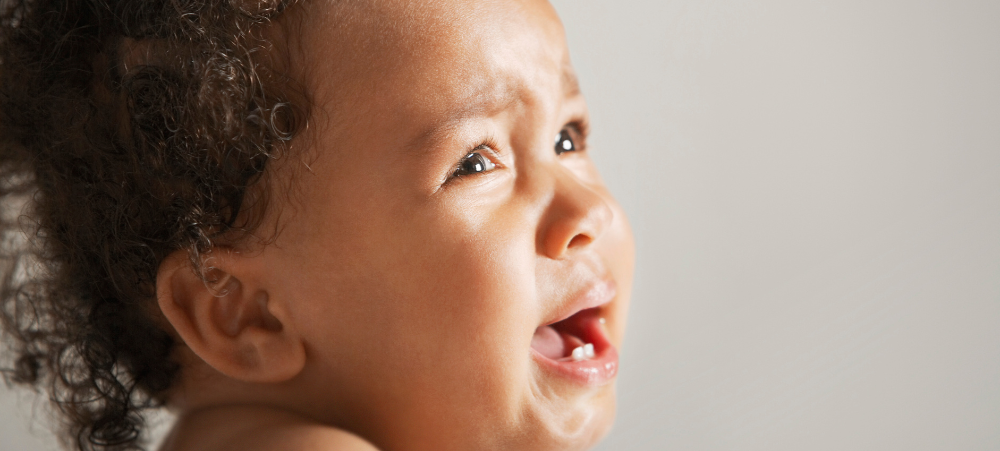Affinity Health, a leading provider of high-quality health cover, discusses separation anxiety in babies, the triggers and causes, and the five symptoms to look out for. It also provides helpful tips for parents on easing separation anxiety in their little ones.
“Separation anxiety is a natural milestone in a baby’s journey of attachment and growth”, says Murray Hewlett, CEO of Affinity Health.
“By understanding their needs, providing reassurance, and fostering a nurturing environment, parents can guide their tots through this phase with love and understanding”.
What is Separation Anxiety?
Separation anxiety in babies refers to the distress and unease experienced by infants when separated from their primary caregiver, usually a parent.
It typically begins around six to seven months old, peaking between 10 to 18 months, and gradually subsides as the child ages and develops a stronger sense of security.
Triggers for separation anxiety can vary from child to child, but everyday situations include the following.
- Leaving your baby with a new caregiver.
- Starting daycare.
- Moving Home.
- The loss of a parent or caregiver.
- Changes in routines that disrupt their sense of familiarity.
It is important to note that separation anxiety is a normal response and does not indicate any underlying issues or problems with the child or caregiver.
Factors that Contribute to the Development of Separation Anxiety in Babies
The following are several factors that contribute to the development of separation anxiety in babies.
Cognitive Development: As infants grow, they develop object permanence, which is the understanding that objects or people continue to exist even when out of sight. This newfound awareness can lead to anxiety when the primary caregiver is absent.
Attachment: Strong emotional bonds between infants and their caregivers are formed during the early months of life. When the caregiver is absent, the baby may experience separation anxiety due to their attachment and reliance on them for comfort and security.
Sensitivity: Some infants may have a naturally more sensitive temperament, making them more prone to experiencing separation anxiety.
Environmental Factors: Significant life changes, like moving to a new home or the birth of a sibling, can disrupt the baby’s sense of security and trigger separation anxiety.
Parental Anxiety: Babies are highly attuned to their parent’s emotions. If a parent feels anxious or uneasy about leaving their child, it can be transmitted to the baby, exacerbating their anxiety.
Five Common Signs of Separation Anxiety in Babies
Identifying the symptoms of separation anxiety can help parents better understand their baby’s needs and provide appropriate support. Here are five common signs to look out for.
Clinging Behaviour: Infants with separation anxiety may become clingier and more reluctant to be separated from their caregiver, even for brief periods.
Crying and Distress: Babies experiencing separation anxiety may cry excessively and become inconsolable when their caregiver is out of sight or leaves the room.
Fear of Strangers: Infants may display fear or wariness when approached by unfamiliar people, seeking comfort and reassurance from their primary caregiver.
Sleep Problems: Separation anxiety can disrupt a baby’s sleep patterns, causing difficulty falling asleep or waking up frequently at night.
Regression: Some babies may exhibit signs of regression, such as reverting to previously outgrown behaviours, like thumb-sucking or bedwetting.
Tips for Parents
To help parents ease their baby’s separation anxiety, Affinity Health provides the following tips.
- Start by leaving your baby with a familiar caregiver for short periods and gradually increase the duration of separation over time.
- Establish a consistent daily routine that includes predictable times for separation and reunions. This helps the baby develop a sense of security and predictability.
- Babies can pick up on their parent’s emotions. Remaining calm, reassuring, and positive when leaving or returning can help alleviate their anxiety.
- Provide a special toy or blanket that carries the familiar scent of the caregiver. This transitional object can provide comfort and security when the caregiver is absent.
- Practice short separations while staying within sight. For example, you can leave the room for a few moments and then return, gradually increasing the distance and time apart.
- Transparency is critical when easing separation anxiety in your little one. Instead of sneaking away, honesty is the best approach. Take a moment to say goodbye, reassuring your baby that you’ll be back soon. When you return, greet your child with a warm smile and a loving hug.
- Engage your baby in fun and interactive activities to redirect their attention and create positive associations with separation. Playing peek-a-boo or offering engaging toys can help distract them from their anxiety.
- Foster your baby’s sense of independence by encouraging exploration and self-soothing. Allow them to explore their surroundings and gradually build confidence in their ability to navigate their environment.
- Reach out to other parents or join support groups to share experiences and strategies for managing separation anxiety. Connecting with others who have gone through or are going through similar challenges can provide valuable insights and support.
“It is important to remember that separation anxiety is a temporary phase and will naturally diminish as your baby grows older and develops more self-assurance”, adds Hewlett.
“By implementing these tips and providing a nurturing and supportive environment, parents can help their babies navigate separation anxiety more easily”.
- Preparing for Your Baby: A Month-by-Month Checklist - February 12, 2025
- Understanding Your Baby’s Sleep Patterns: Tips for Parents - February 12, 2025
- Seasonal suggestions to lift your lunchbox game - February 12, 2025




